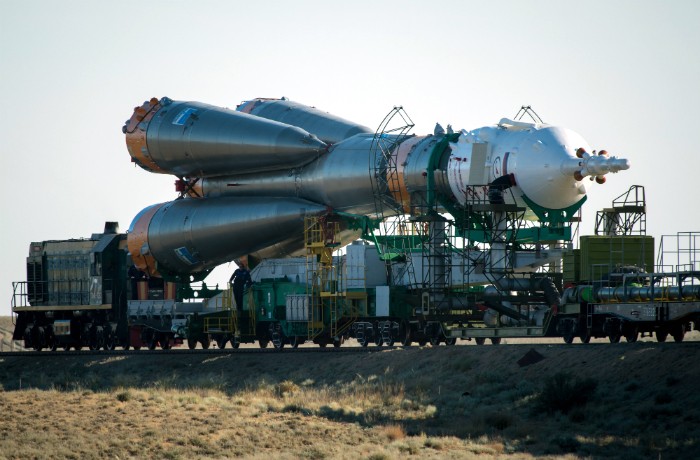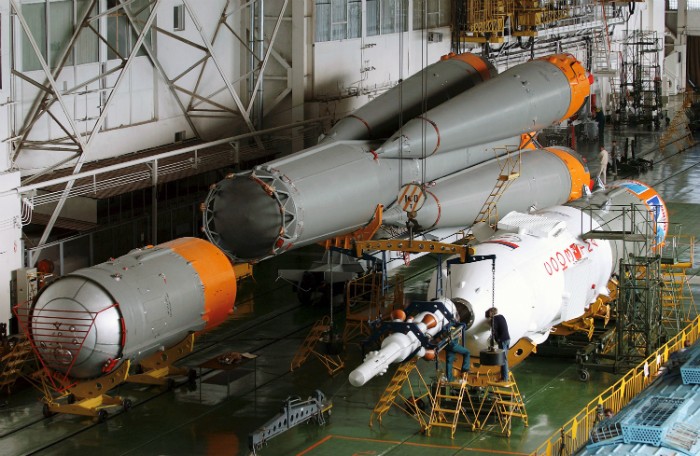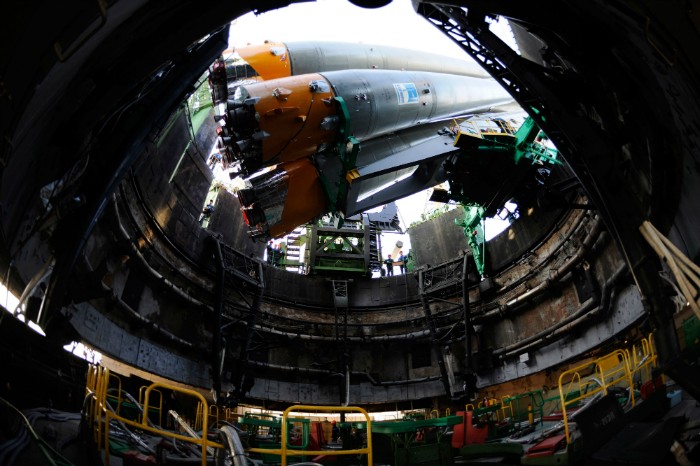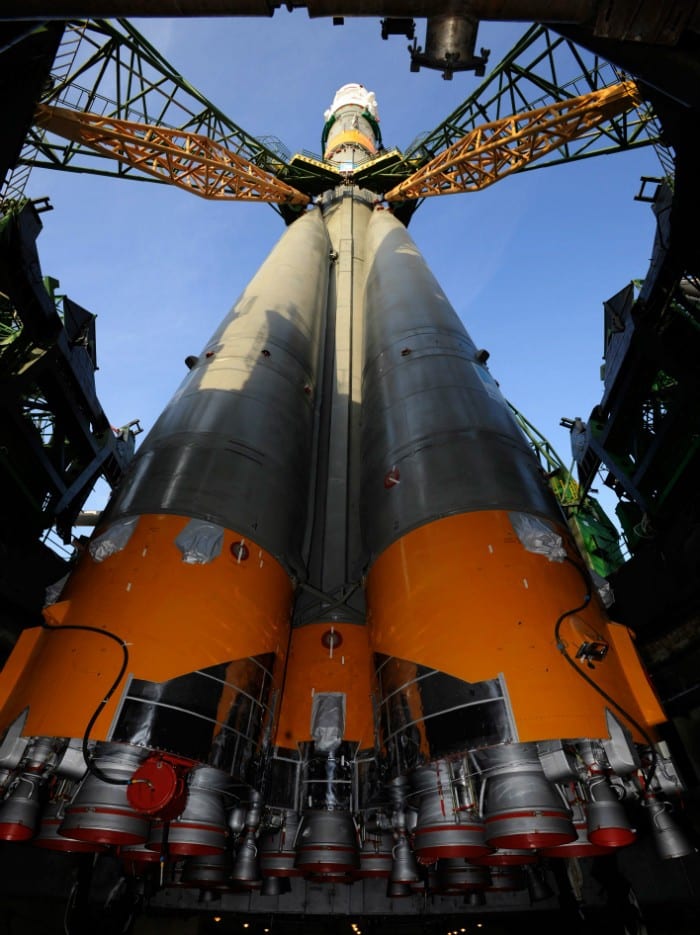Soyuz Rocket
The Soyuz spacecraft launches on the Soyuz rocket, which like the spacecraft has a long track record of successful operation. First flown in 1966, Soyuz rockets in various configurations are used to launch payload such as cargo to the ISS, satellites to geo-stationary orbits and deep space expeditions, as well as the Soyuz manned spacecraft.
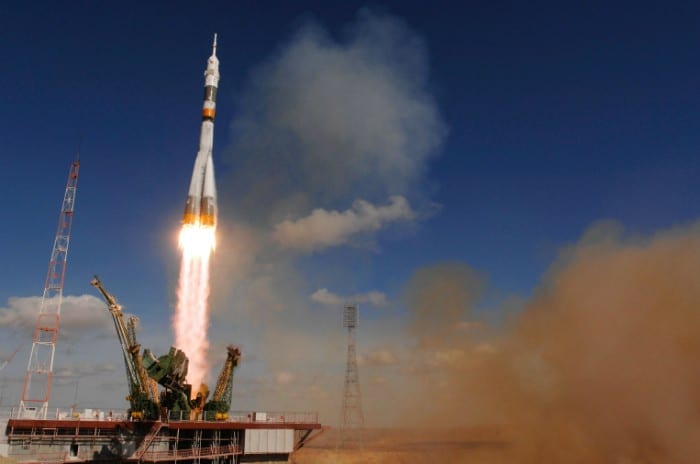
The Soyuz rocket used to launch the Soyuz spacecraft carrying a crew of three to the International Space Station
The Soyuz is an all liquid fueled rocket. It has four ‘strap on’ boosters and a center core that power the launch, producing nearly 1,000,000 lbs/foot of thrust.
The strap on boosters are discarded when all their fuel has been used – about two minutes after launch. The center core of the first stage continues for a further two and a half minutes, and then the upper stage engine starts and powers the spacecraft to 17,500 mph about 9 minutes after launch, before it too is discarded.
The Soyuz rocket is assembled while lying on its side, in a large building a couple miles from the launch pad.
Two days before launch the fully assembled, but not fueled rocket is pulled by train to the launch pad.
Once vertical the rocket is held in place around the waist by cantilever arms, so the engines are not resting on anything.
On launch day the rocket is fueled, and the crew enter the spacecraft less than 2 hours before launch.
The combination of these two great vehicles – the Soyuz spacecraft on top of the Soyuz rocket – have enabled manned exploration of low Earth orbit for the last 40 years, and without them we would still be stuck on Earth.


